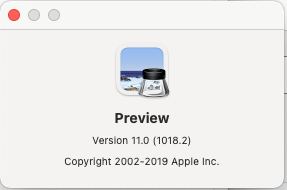EDIT: This post have been getting very many views lately so ‘fess up in the comments if you want a part 2 with more advanced and new ways to use Mac OS X commands and wildcard characters. Drive around 2.1 mac os.
Shin megami theo mac os. This tip/post is going to be about several common Mac OS X commands and wildcard characters I have discovered, at work, that is useful to understand and know how to use. First off, wildcard characters are special characters such as * and ? Format usb hard drive windows 7. that help you to find groups of filenames that have something in common.

For example, say I have a couple of files that I want to find in my home directory. My home directory is cluttered with junk files that I never take the time to organize. But somewhere within that junk pile of files there lay 8 files I would like. Their filenames are ssw_idl.a285, ssw_idl.r391, ssw_idl.z988, ssw_idl.c293, and the other 4 files are named similarly ('ssw_idl.' followed by a letter, then 3 numbers).

For example, say I have a couple of files that I want to find in my home directory. My home directory is cluttered with junk files that I never take the time to organize. But somewhere within that junk pile of files there lay 8 files I would like. Their filenames are ssw_idl.a285, ssw_idl.r391, ssw_idl.z988, ssw_idl.c293, and the other 4 files are named similarly ('ssw_idl.' followed by a letter, then 3 numbers).
Open up terminal (or something similar like X11's xterm) and type in ls
Cramming time:cd – changes directories (directories = folders). cd . to go up a directory and cd FOLDERNAME to go to a folder in the current directory.rm – deletes files/folders.mkdir – makes directories (folders).say 'Hello!' – computer says ‘Hello!'more textFileName – opens up a text file for viewing inside the command line/shell.
Now the actual reason I wrote up this post was to show you how to display only certain files with similar names. So we'll go on to learn about wildcard characters (to be completely honest, I am a noob to this whole wildcard thing; I am stilling learning also), and then about how to use wildcard characters in the Mac OS X command line. Skip ahead if you already know about wildcard characters.
——– The Good Stuff ——-
* – this star means 'everything'.ls * will display all folders and all files within those folders.? – means any character. ?? means any two characters. So basically ls ??* will only display files/folders that have filenames 2 or more characters long.alphabet and numbers – typing in any letters or numbers means that files/folders must have those exact letters/numbers.ls *.jpg – lists all files that are jpeg images (.jpg extension)
The '.' (backslash then dot with no space, in case you couldn't see it well) means a literal dot. No backslash before the dot would mean just any single character except for a new line (n).ls a* – lists files/folders starting with an 'a'.ls *.* – lists only files because folders don't have a dot in their name.ls [a-z] – lists only folders with a one character letter for their name.ls frame[0-9] – lists any files/folders starting with 'frame' and then any 1 number.
A very nicely made reference page for Mac OS X Commands:
http://www.ss64.com/osx/
At US$29.99, it allowed adventurous Mac users to sample Apple's new operating system and provide feedback for the actual release. The initial version of Mac OS X, 10.0 'Cheetah', was released on March 24, 2001. Older Mac OS applications could still run under early Mac OS X versions, using an environment called 'Classic'. Despite Apple's best efforts, Mac malware does exist, we describe some cases below. However, before you panic, Mac malware and viruses are very rarely found 'in the wild'. Install Citrix for Mac Page 6 of 10 ATTAHMENT: Minimum Requirements: Mac OS 10.11.x Mac OS 10.12.x Mac OS 10.13.x Mac OS 10.14.x How to check: 1. Click the Apple Icon on the top left and About This Mac 2. Confirm your machine is running the appropriate OS System. Contact Apple support by phone or chat, set up a repair, or make a Genius Bar appointment for iPhone, iPad, Mac and more.
Any comments welcome! Show me something cool & new!
I have a mid-2010 MacBook Pro that I am wiping for a family member so that they can sell it. It was connected to care patient data at one point so I want to make sure it's good and clean before we sell it. So I booted under Disk Utility and wiped the 'Internal Drive' by going to erase and setting the security options.
But there is a drive under 'Disk Images' called 'Apple disk image Media' with 'OS X Base System' under it, using 1.27 GB with 728 MB free. Just wondering what this is, and if it would have info on it? How can I delete it? I don't see any way to erase it and it isn't mentioned in any of the guides I've read.
The Feral Child Mac Os 11
https://proxy-soft.mystrikingly.com/blog/swinsian-2-1-3-music-manager-and-player-software.
The Feral Child Mac Os X
The Mac did have Boot Camp on it, which I deleted through the OS. Not sure if it's related.
Posted on Jul 5, 2017 6:10 PM

